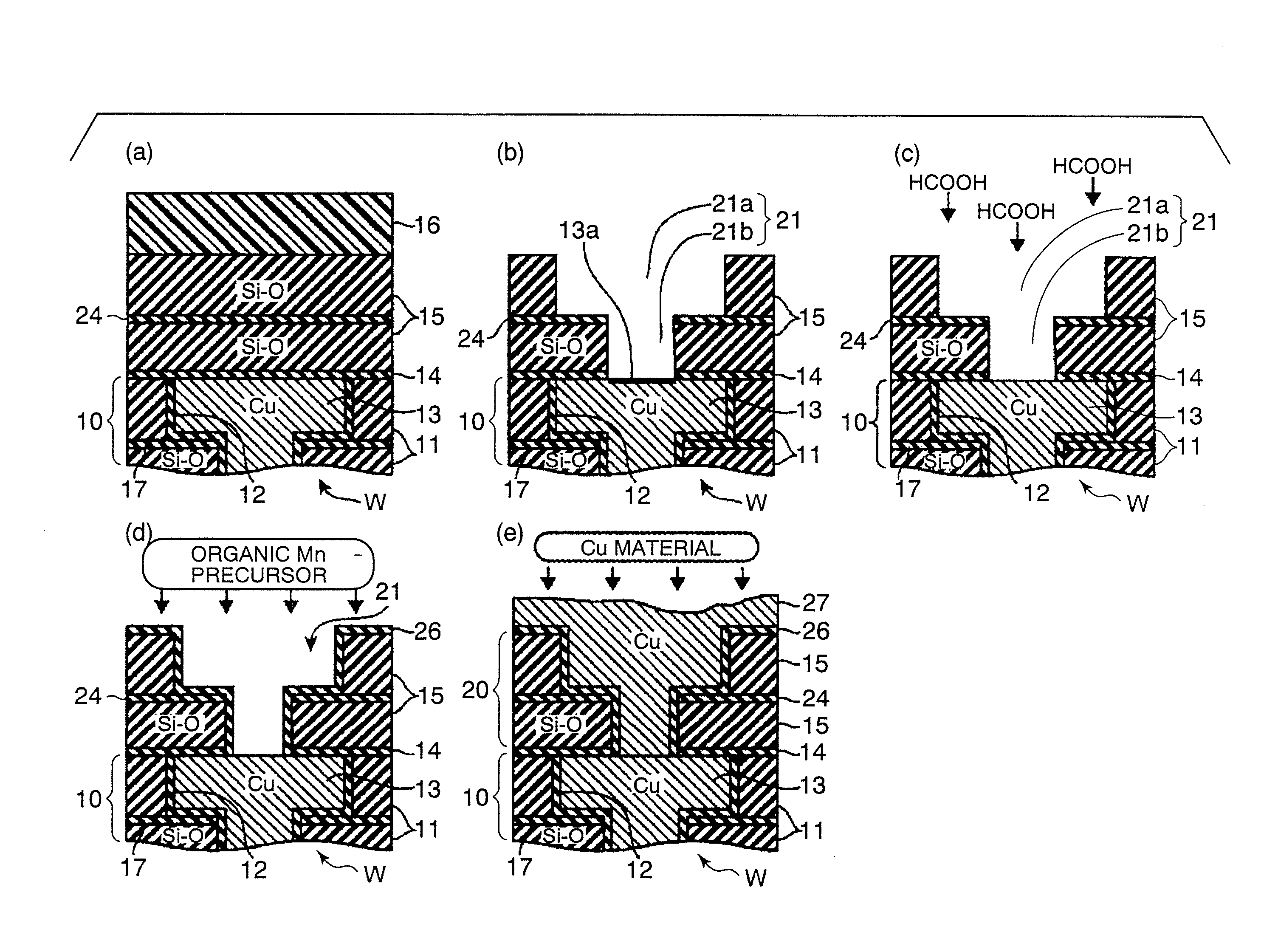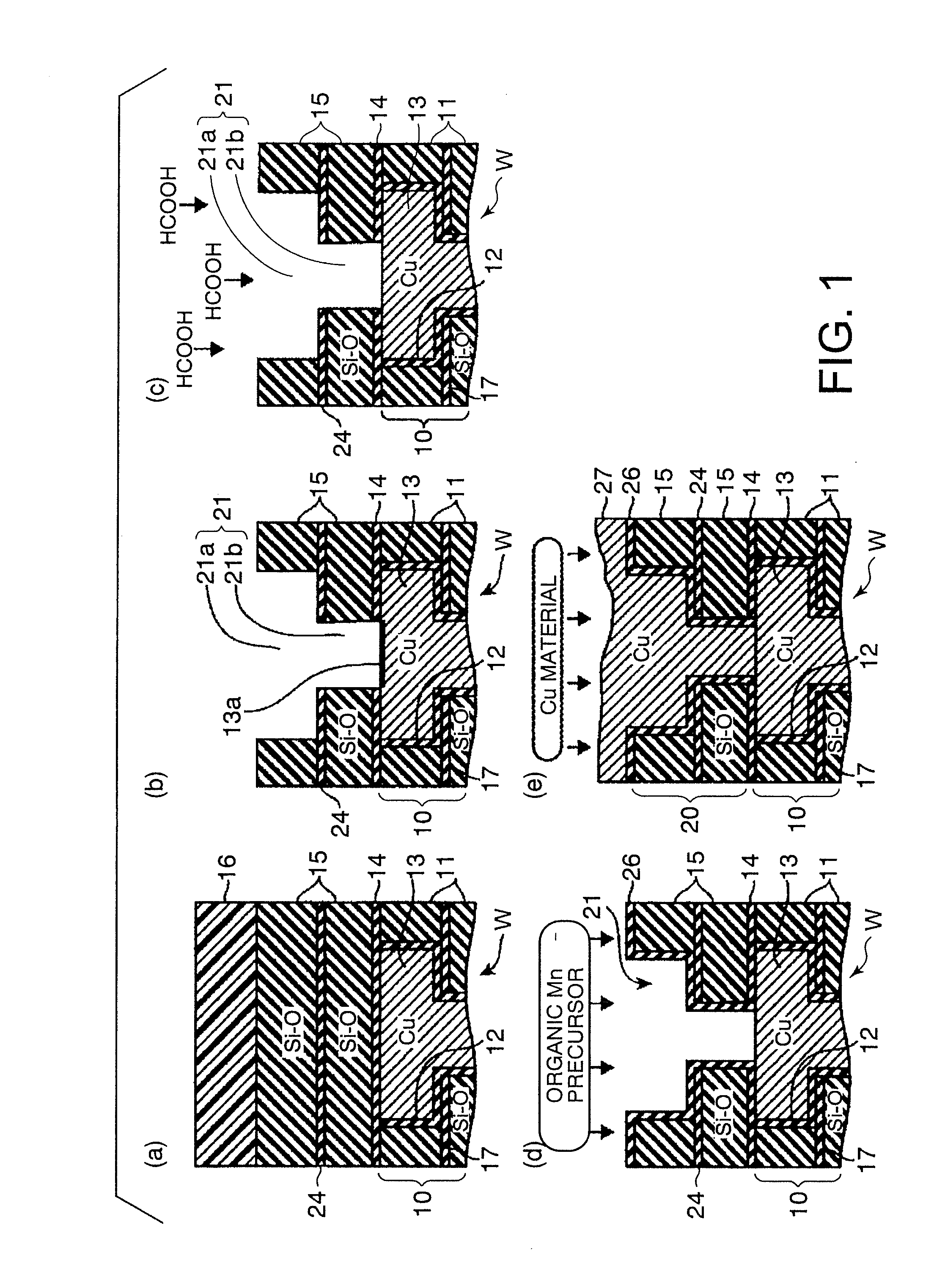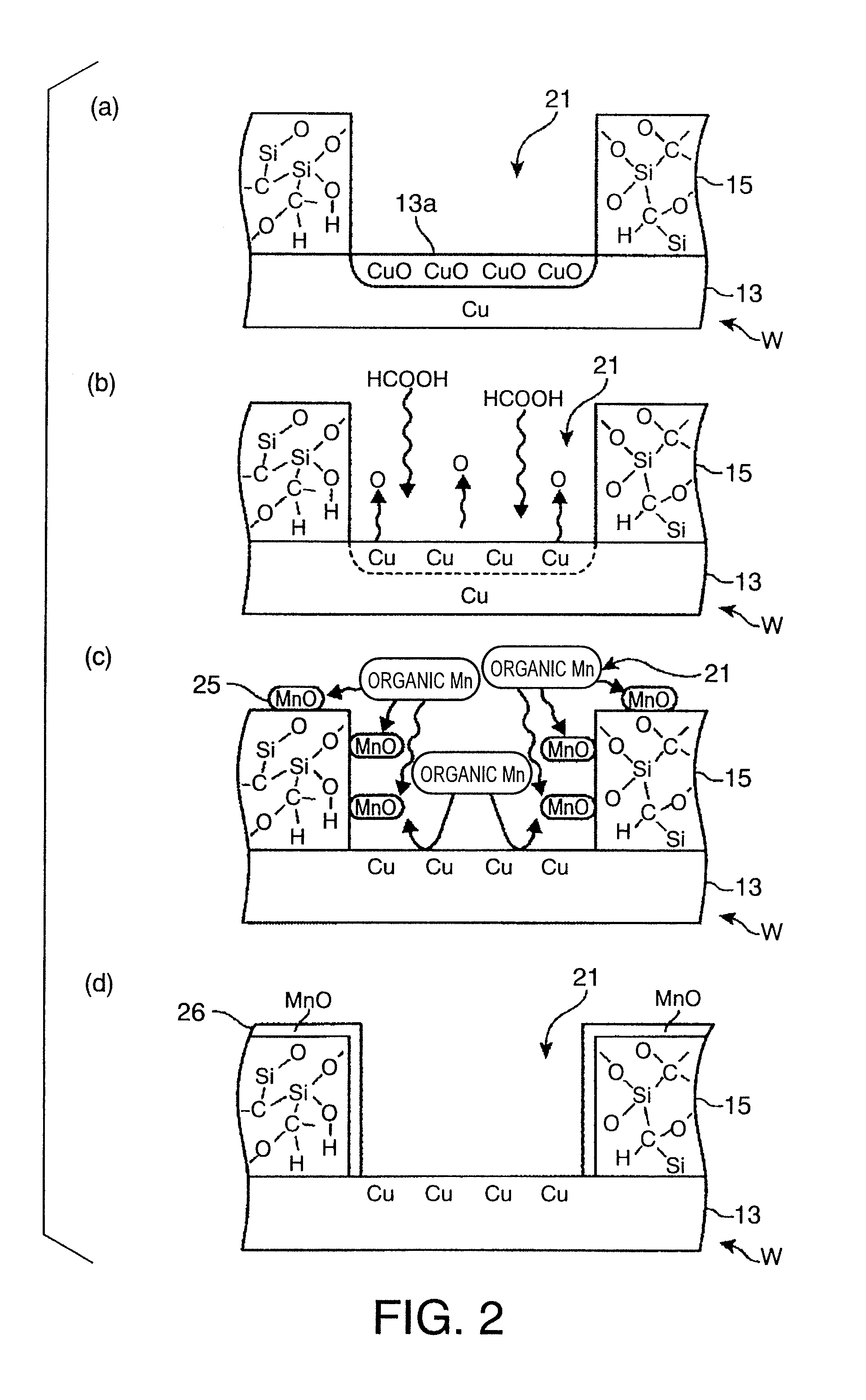Method of manufacturing semiconductor device, semiconductor device, electronic instrument, semiconductor manufacturing apparatus, and storage medium
a manufacturing method and semiconductor technology, applied in the direction of superimposed coating process, basic electric elements, coatings, etc., can solve the problems of difficult to cope with the miniaturization of wiring density, poor step coverage of the recess, and large amount of manganese deposited on the bottom, so as to improve the working speed of the device and reduce the size of the chip. , the effect of improving the step coverag
- Summary
- Abstract
- Description
- Claims
- Application Information
AI Technical Summary
Benefits of technology
Problems solved by technology
Method used
Image
Examples
examples
Herebelow, the experiments conducted for the present invention are described. In the experiments, a dummy wafer W shown in FIG. 8(a) was used. The wafer W was manufactured as follows. At first, a silicon oxide film 91 of 100 nm in thickness was formed on a silicon substrate 90 by a plasma CVD method, at 350° C., using TEOS (Tetra Ethoxy Silane, otherwise Tetraethyl Orthosilicate). Then, a manganese oxide layer 92 was formed on the silicon oxide film 91 in the aforementioned Cu—MnOxCVD module, under film deposition conditions as described below. Then, a copper film 93 was formed on the surface of the wafer W by the sputtering method, such that the copper film 93 has a thickness of 100 nm. Thereafter, the wafer W was subjected to a thermal process under the following annealing conditions in order to confirm whether copper diffused or not. Then, the below-described experiment was conducted for the wafer W. Note that, since this experiment did not require an excellent step coverage, a s...
experiment 1
( Observation of Section)
The cut surfaces of the above three kinds of wafers W were observed by using a TEM (Transmission Electron Microscopy). As shown in FIGS. 9 and 11, in the wafers W on which the films had been deposited at 300° C. and 400° C., there was confirmed a very thin manganese oxide layer 92 as small as 5 nm in thickness between the silicon oxide film 91 and the copper film 93. This film was a smooth continuous film whose interfaces were free of irregularities, and was amorphous without any crack such as a grain boundary. There was found no surplus manganese that remained and / or segregated between the silicon oxide film 91 and the copper film 93. Although not shown, in the wafers W on which the films had been deposited at 100° C. and 200° C., the same experiment result was confirmed. A film thickness of the manganese oxide film 92 obtained herein was further small, i.e., 2 to 3 nm.
Thus, due to the formation of the aforementioned barrier film 26 by such a method, it can...
experiment 2
( Composition Mapping in Section)
Next, compositions of the sections of the respective wafers W were analyzed by using an EDX (Energy Dispersive X-ray Analysis). In each wafer W, an adhesive was applied to the surface of the copper film 93 for the analysis.
As shown in FIGS. 13 and 14, in the wafers W on which the films had been deposited at 300° C. and 400° C., a manganese signal was confirmed only in the very thin layer 92 formed between the silicon oxide film 91 and the copper film 93. Thus, manganese is unquestionably contained in the very thin layer 92, and the manganese is considered to be manganese oxide, considering the below-described result obtained by means of a SIMS. On the other hand, since no Cu signal is detected from the silicon oxide film 91, it did not seem that Cu permeated into the silicon oxide film 91.
From above, it was found that the manganese oxide layer 92 had a significantly excellent Cu-diffusion barrier function, and that there existed no pin hole (for exam...
PUM
| Property | Measurement | Unit |
|---|---|---|
| Temperature | aaaaa | aaaaa |
| Temperature | aaaaa | aaaaa |
| Thickness | aaaaa | aaaaa |
Abstract
Description
Claims
Application Information
 Login to View More
Login to View More - R&D
- Intellectual Property
- Life Sciences
- Materials
- Tech Scout
- Unparalleled Data Quality
- Higher Quality Content
- 60% Fewer Hallucinations
Browse by: Latest US Patents, China's latest patents, Technical Efficacy Thesaurus, Application Domain, Technology Topic, Popular Technical Reports.
© 2025 PatSnap. All rights reserved.Legal|Privacy policy|Modern Slavery Act Transparency Statement|Sitemap|About US| Contact US: help@patsnap.com



